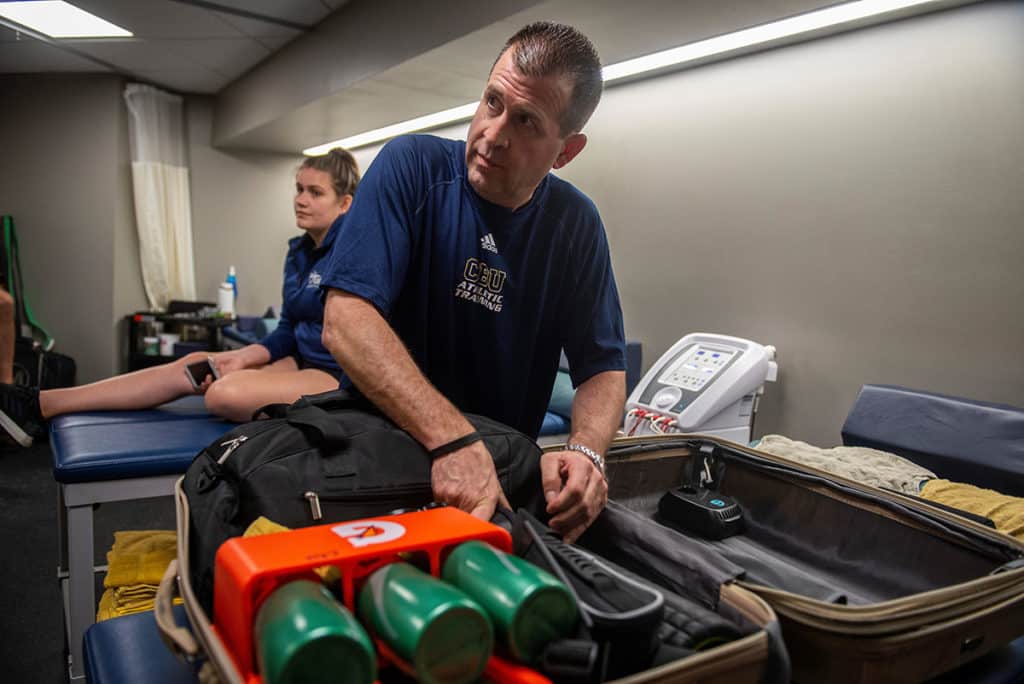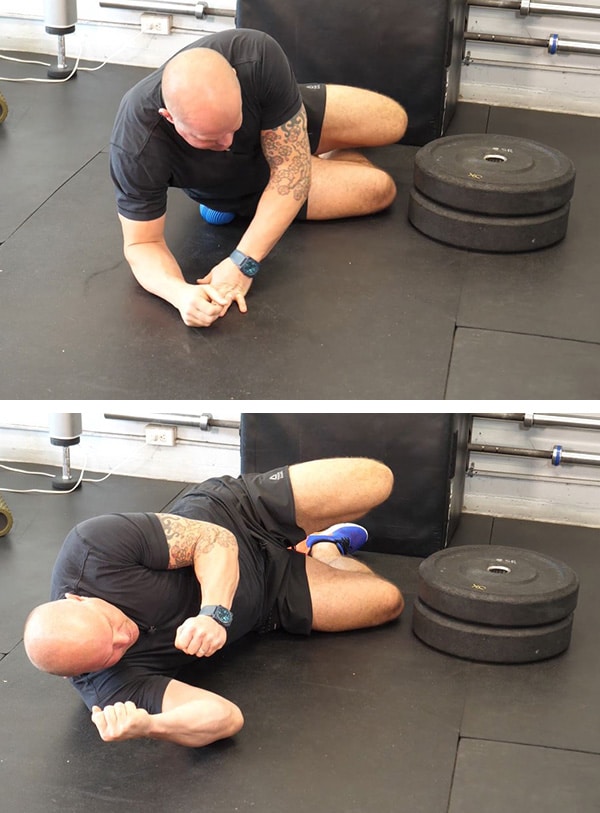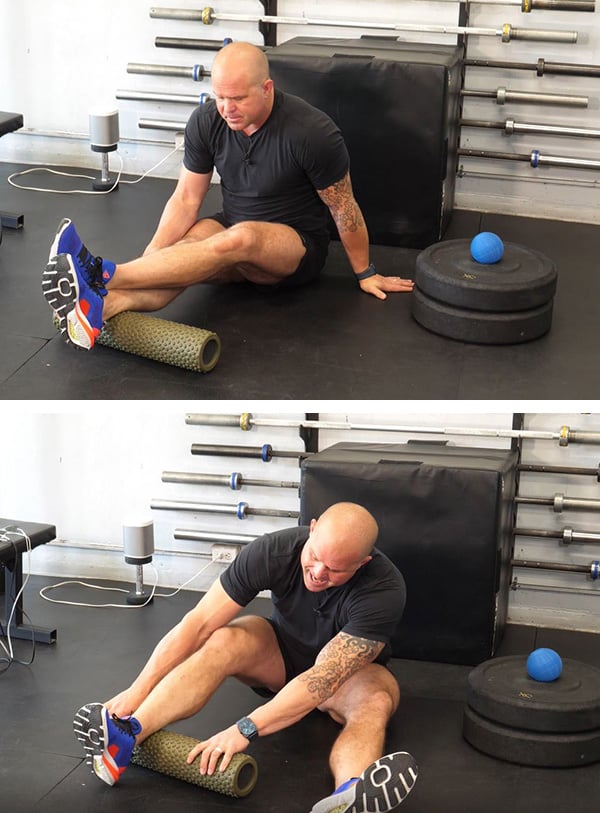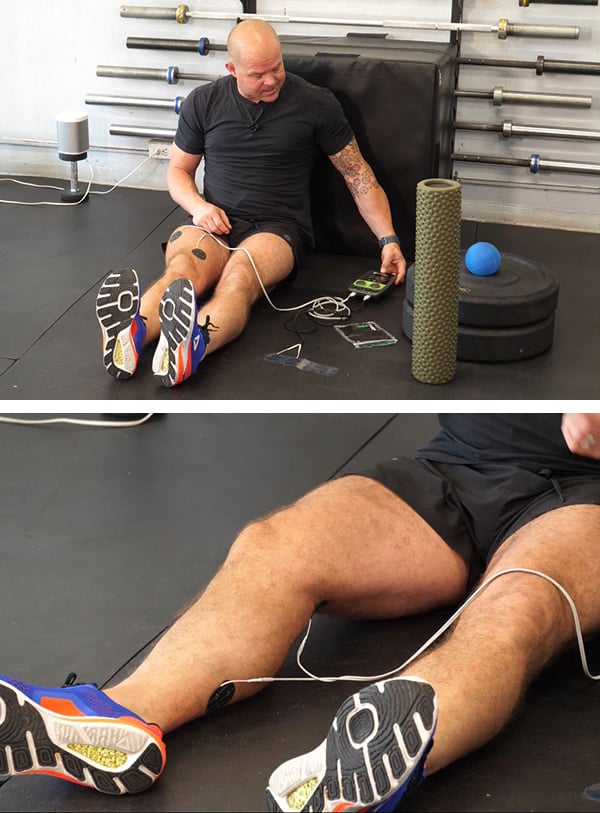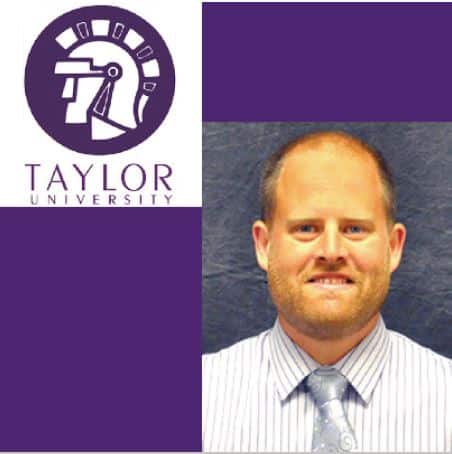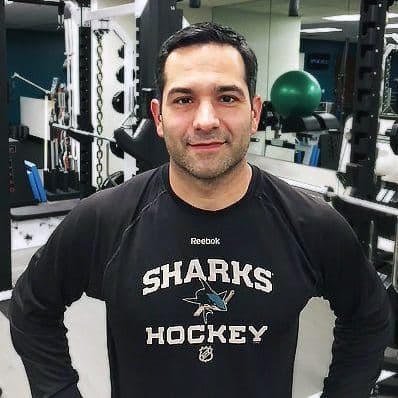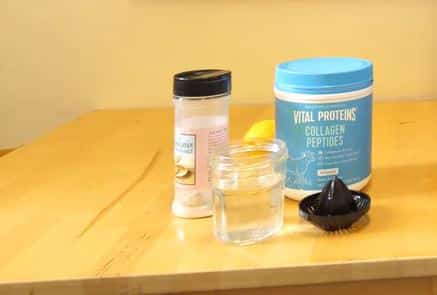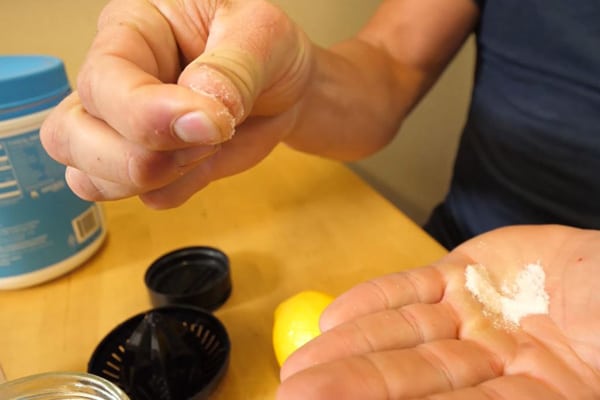Jeff Watson’s mission is to bring evidence-based, research information, quality training and teaching to student athletes. We got to interview Jeff about what makes his program unique and what keeps him motivated.
About Jeff Watson: Jeff Watson completed his education at the University of Michigan. He received a Master’s of Science Degree in Kinesiology with a focus on Exercise Physiology, a Bachelor of Science Degree in Kinesiology and a K-12 Teaching Certificate. He is a certified strength and conditioning specialist through the NSCA and the Head Strength and Conditioning Coach at the University of Western Ontario.
What initially attracted you to strength and conditioning?
Initially,
I thought I would be a PE teacher. I started going down that path and realized
how much I enjoy working with athletes in a weight room setting. I also
realized that I don’t like seeing ugly pushups and poor technique. Movement standards
that adhere to our anatomical design are critical for developing quality repetitions.
For example, keeping your spine stable and protected while loaded will have a
huge impact on a squat, a plank, a push-up or seated in a 5-way neck machine.
Movement
standards are not the following—Range of motion, load, effort, speed, or cues.
These are all factors and not standards of movements. My job is simply to move
people toward better standards of movement.
- MOVEMENT STANDARD #1 is a focus on Midline Stability. This means no change in the spine while moving. Fix head position, eyes down – no neck extension.
- MOVEMENT STANDARD #2 is Loading Order. The prime movers, the hips and shoulders, must move first – as opposed to elbows and knees.
- MOVEMENT STANDARD #3 – Laws of Torque. Flexion equals external rotation and extension equals internal rotation. For example, when doing a push-up, the humerus must be externally rotated in the shoulder capsule.
Once
you have created quality patterns of movement you can begin to load them
appropriately. Program design becomes simple and uncomplicated because the
movement pattern is more important than any exercise that you may want to
utilize in your training. Finding solutions for major issues such as
hypertrophy, utilizing the force-velocity curve, recovery, and lowering sub
concussive impact forces with prudent and productive training has been what has
kept my passion in the field of strength and conditioning.
What is your mission in your field?
My
mission is to provide evidence based, research informed quality training, teaching,
supervision and instruction to our student athletes that will allow them to
maximize their athletic potential and reduce the occurrence of athletic
injuries.
To
find solutions to problems you have to ask athletes lots of questions to get to
the heart of the matter. Is your lifestyle at odds with your performance goals?
Are you overtraining? Are you using productive recovery strategies? It is my
mission to help address these concerns through caring and education. I want
athletes to train hard and then get out of the weight room as fast as they can
to begin to recover for their next training session. They need to train
smarter, not longer. Workouts in the weight-room are typically completed in
under 45 minutes so the athletes can maintain focus on quality movement
patterns with the neurological intent to involve the maximum number of muscle
fibers innervated and the effort put forth on every rep.
Why is recovery important in strength training?
Strength
training is built on the concept of progressive overload. If you are not
allowing enough time for your system to recover from the stress applied to it
then you will not have optimal improvement and performance. The Marc Pro is an
excellent strategy in helping athletes improve their muscle recovery from
exercise.
I
have had conversations with various coaches about monitoring their athlete’s
training load and recovery. A possible solution was to create a weekly schedule
that would be followed to ensure that there were no dramatic increases or
spikes in the training load presented to the athlete. Significant increases or
spikes greatly increase the risk of overtraining and injury.
“40%
of injuries in American Football were associated with a rapid change (>10%)
in weekly training load in the preceding week” (Piggott et. Al. 2009). “When
training load was fairly constant (ranging from 5% less to 10% more than the
previous week) players had <10% risk of injury” (Gabbet).
Athletes
will thrive and perform better when they allow their body, mind and spirit to
repair and recuperate. If the individual is not recovering, they are going to
break down and get hurt.
Describe your typical day at the University of Western Ontario?
I love what I do. I usually start working at 7am and end at 7pm, never knowing what to expect as each day unfolds. Academics are a priority at Western and we have a diverse group of students studying in many different disciplines. Because class schedules are all over the place and our weight room is small – but well equipped, I am always working with different teams and small groups of student athletes throughout the day.
I
leave work and usually there is a pick up or drop off for one or both of my
kids, Maddie and Zach’s activities, my wife Allyson and I usually divide and
conquer the transportation duties. After that I usually grab some dinner and
review the day with my wife, do the bed time ritual of teeth cleaning and
reading or homework project then head back to campus. I write all of the
workouts on the whiteboards in the gym using a colorful stash of Expo dry erase
markers –I should be a major stockholder. I have developed excellent printing
skills through years of practice. This usually takes me about an hour and a
half. The gym is quiet and I can be very productive. I am usually writing the
workouts from about 9:30 – 11:00 pm. I don’t need much sleep.
What sports do you typically work with?
I
work with all the sports, a total of 23 teams. I also work with some club teams
too, based on their attendance and who is committed to showing up and putting
in work, day in and day out. Teams with great attendance receive high priority
scheduling in our endeavor to provide the best “hands on” strength and
conditioning program in Canada.
What is your philosophy in regards to strength and conditioning?
My
job is to be a service provider to both coaches and athletes. I believe in
taking care of student athletes and giving them the tools and resources to
soar.
I
prefer to discuss what my physiology is rather than what my philosophy is
because what we are trying to achieve should be evidence based and not bro
science. But, if I was to use a quote as a statement for what my strength and
conditioning philosophy is I would lean on Johann Goethe who said something to
the effect that “If you treat an
individual as he is, he will remain how he is. But if you treat him as if he
were what he ought to be and could be, he will become what he ought to be and
could be.”
What are your thoughts about the Marc Pro?
I
like using the device and incorporating it into our athlete’s recovery
strategies. The device uses such a simple concept and compliments your body’s
lymphatic drainage system and supports the immune system function. The Marc Pro simply enhances your body’s way of flushing out the
bad stuff and bringing in the good stuff. As soon as an athlete tries it, they
are sold. Their brain knows that their legs feel lighter and that they are
ready for the next training session or game.
What is your protocol for using a Marc Pro with athletes?
I
don’t need athletes to expend more energy, I need them to recover. The Marc Pro
is really smart and straightforward. Using the Marc Pro is so simple, people
think that you are trying to deceive them.
We
have four units for our department and eight units on campus. The Marc Pro is a
way to individualize an athlete’s recovery program. For example, on a
volleyball team your outside hitters, setters and defensive specialists may
want to use the Marc Pro to help their neck and upper torso muscles recover and
the middle blockers who are jumping for hundreds of repetitions may want to use
the Marc pro to help their lower torso muscles recover. People may say that the
concept of ‘recovery’ isn’t supposed to be in my lane as a strength and
conditioning coach. However, I see that my lane is “What’s best for the
athletes?” The Marc Pro is best for the athletes and is why I have them use it
post-weight room workout and pre and post practice workout.
What advice would you give athletes about recovery?
I
would give athletes three pieces of advice. Number 1, know your body. Number 2,
understand how your body works. Number 3, use the Marc Pro.
I have an athlete training with me, that was playing summer league rugby games on a Saturday and then had to turn around and compete the next day as she was trying to earn a spot on a travel team for Canada. She has since accomplished this goal. She was overtraining in a 24-hour period and her body was in rough shape and I had her try the Marc Pro. She kept it for two days and used it for her neck and shoulders, her quads, and low back musculature. She is hooked now because she has felt the benefits of combining her training with quality recovery strategies. When I let an athlete try the Marc Pro for 30 minutes, I ask them, “How do you feel?” Without hesitation, they respond and say that they feel better and want to keep using the Marc Pro.
What is your favorite part about working with athletes on a daily basis?
The athletes I have the pleasure to work with are young and eager to improve. I myself like to bring all my youthful energy in the creation and implementation of their training sessions. The athletes always keep you real. They are passionate and driven, filled with motivation, which helps to foster a competitive environment in the training facility and on the competitive field, rink, pitch, court or pool. You want a job where you enjoy the work you do, and every day, I get to say that I do.
You may also be interested in:
Athletic Trainer Spotlight | Valerie Tinklepaugh-Hairston of TCU
ATC Tip: How to Efficiently Get Student Athletes Back to Play
Interview with Andy Bliz: Athletic Trainer at University of Buffalo



